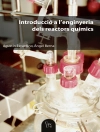Keine ausführliche Beschreibung für ‘Protein-Ligand Interactions’ verfügbar.
Das E-Book Protein-Ligand Interactions wird angeboten von De Gruyter und wurde mit folgenden Begriffen kategorisiert:
Proteins – Congresses, Ligands (Biochemistry) – Congresses
Cuprins
Frontmatter – Preface – Section I. General – Letter from J. Wyman to the Members of the Symposium – Concerted Changes in an Allosteric Macromolecule – Ligand Interactions in Globular Proteins – Discussion – Ligand Binding to Enzyme Complexes – Discussion – Properties of Polymeric Proteins Bound to Solid Matrices: Subunit Exchange Chromatography – Discussion – Contributions of Aromatic Amino Acid Residues to the Optical Activity of Protein-Ligand Complexes – Discussion – Section II. Enzymes – The Architecture of the Coenzyme Binding Domain in Dehydrogenases as Revealed by X-Ray Structure Analysis – Discussion – The Interaction of Glutamate Dehydrogenase with a Coenzyme Analog – Discussion – The Interaction of Adenosine Triphosphate and its Analogs with Myosin and the Modification by Actin – Discussion – Isolation of a Guanylnucleotide Binding Protein from Pigeon Erythrocyte Membranes – Discussion – On the Binding of Isoleucine and Related Amino Acids to Isoleucyl-t RNA Synthetase from Escherichia Coli MRE 600 – Discussion – The Effect of Small Molecules on the Affinity of Individual Chains in Hemoglobin and on its Cooperativity – Discussion – Cooperative Interactions without Symmetry or Subunits – Discussion – A Nuclear Magnetic Resonance Study of Activator Binding by Carboxypeptidase A – Discussion – Section III. Repressors – Lactose Operator Sequences and the Action of Lac Repressor – Discussion – The Active Sites of Lac Repressor – Discussion – Lac Repressor – Discussion – The Use of Suppressed Nonsense Mutations to Generate Altered Lac Repressor Molecules – Discussion – Effect of Alterations in Lac Operator DNA on Repressor Binding – Discussion – Interaction of Lac Repressor with Non-Specific DNA Binding Sites – Discussion – Section IV. Receptors – Binding and Functional States of the Cholinergic Receptor Protein from Torpedo Marmorata – Discussion – Subunit Structure and Binding Sites of the Acetylcholine Receptor – Discussion – Further Characterization of Purified Acetylcholine Receptor and its Incorporation into Phospholipid Vesicles – Discussion – Structural and Functional Studies of an Acetylcholine Receptor – Discussion – Section V. Antibodies, Drugs and Metabolites – Antibody Combining Sites as a Model for Molecular Recognition – Discussion – Antibiotic Action on Enzymes Involved in Peptidoglycan Synthesis – Discussion – Problems in Studying Protein Binding with Regard to the Interaction of Steroids with a Specific Binding Globulin – Discussion – The Interaction of Low-Molecular Compounds with Serum Albumin as Measured by Optical Methods. Circular Dichroism of Bilirubin-Human Serum Albumin Complexes in the Presence of Alcohols in Aqueous Solution – Discussion – Section VI. Detergents and Electrolytes – The Nature of Specific and Non-Specific Interactions of Detergents with Proteins: Complexing and Unfolding – Discussion – Interaction of Detergents with Proteins: Effect of Counter Ions on the System Ferrimyoglobin- Laurylpyridinium Halides in Aqueous Medium – Discussion – Influence of Ions on the Kinetics of Cooperative Conformational Changes in Globular Proteins – Discussion – Neutral Salt Effects on the Conformational Stability of Biological Macromolecules – Discussion – Concluding Remarks – Index of Contributors – Subject Index – Backmatter












